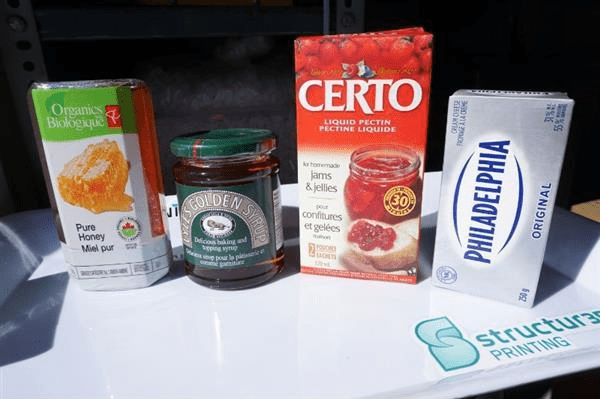Are you thinking of getting a 3D printer for your home or business? Visit Top 3D Shop and read our latest reviews. We will help you get the machine you need!

When 3D Systems opened the first of its kind culinary laboratory for 3D printing 3DS Culinary Lab, this created a whole industry direction, the beginning of a new era - the creation of food products. A new path was opened for the manufacture of beautiful and unusual products and combinations of tastes that we had never tried or seen before. Today you will learn what the printing of everyday products, honey, syrup, cream cheese. Structur3D, the author of the universal Disov3ry paste tool, tested a number of products and shared its sweet and sometimes acidic results.
The Disov3ry paste head is easy to use and allows you to turn any FDM 3D printer into a food printer. It costs only $ 400 and is an ideal solution for owners of 3D printers who are interested in food printing, but do not want to buy special devices for this.
Earlier, the Structur3D team had already surprised the public with work using food products, including chocolate and sugar. Sweet Star Wars-themed figures, for example, will not only be a good decoration for your cake, but will also help create a festive atmosphere on Star Wars Day. However, now Canadian engineers decided to use new types of products.
From now on, materials for 3D printing can serve: liquid honey, syrup, liquid pectin and creamy soft cheese. The first experiments were conducted by Johannes Schumacher on honey, syrup and pectin, products that have the lowest density. The experiment was quite successful, with the exception of a small surprise in the form of a "lotus effect."
He tried to reduce the area (and surface tension) and increase the print temperature to 60 ° C to minimize the effect, but as a result, droplets formed even faster. The same was observed when working with pectin and syrup. After that, Schumacher tried a thicker product for printing - cream cheese Philadelphia. Due to the greater density, he kept his shape much better. At the stage of printing with cheese, everything looked more promising than with syrup. In the process, Schumacher realized that the density is highly dependent on temperature, which in turn affects the printing process and the final product.
The results of the experiments showed that at this stage the best food-grade printing materials should have medium density and viscosity and be pasty. These include: chocolate, pancake and pizza dough, marmalade, sugar syrup, vermicelli, mashed vegetables, etc.
Many ideas regarding food printing are still being developed, engineers are working on various projects - from hamburgers to nutritious and healthy products for the elderly. So the list of dishes created on a 3D printer will only expand.